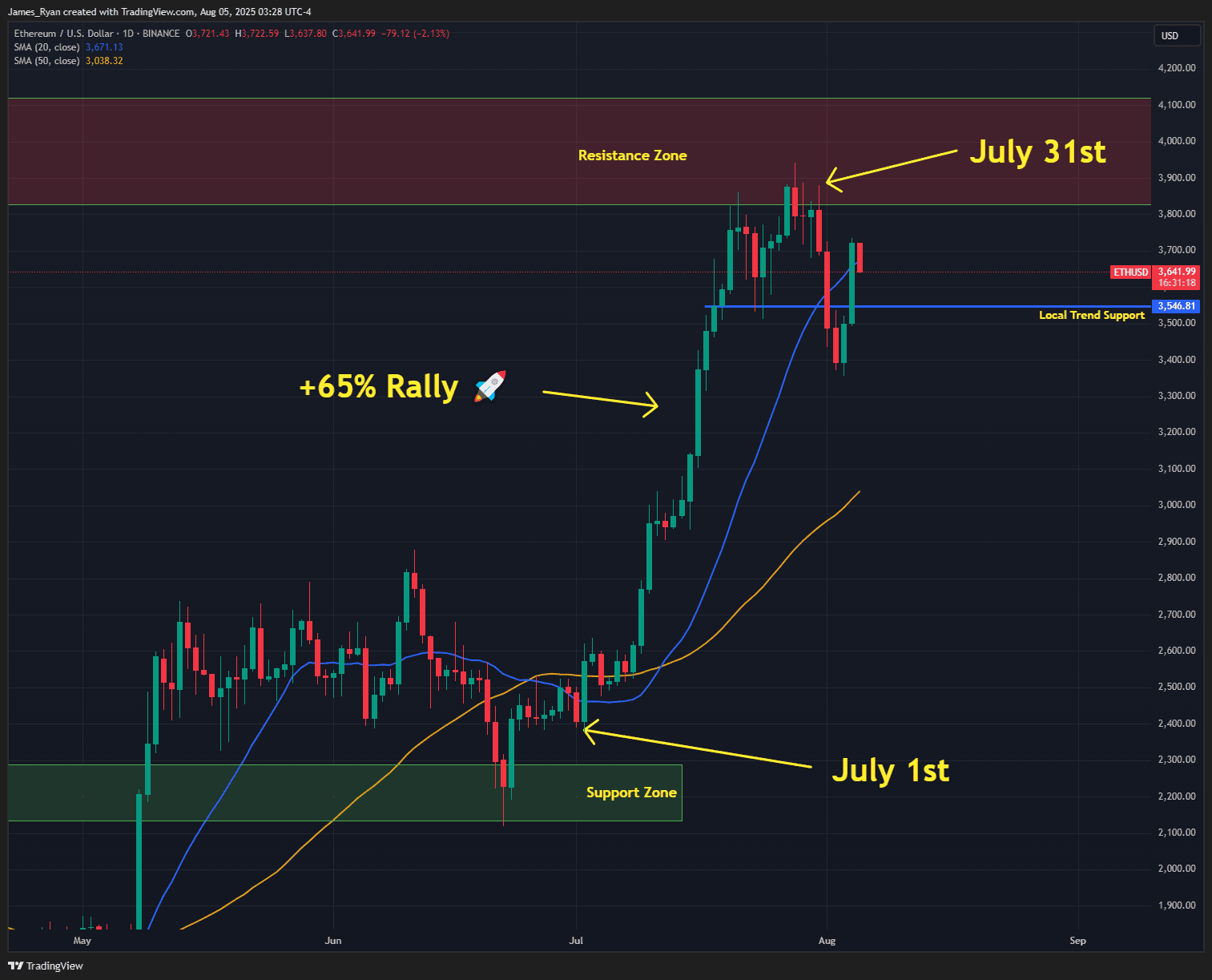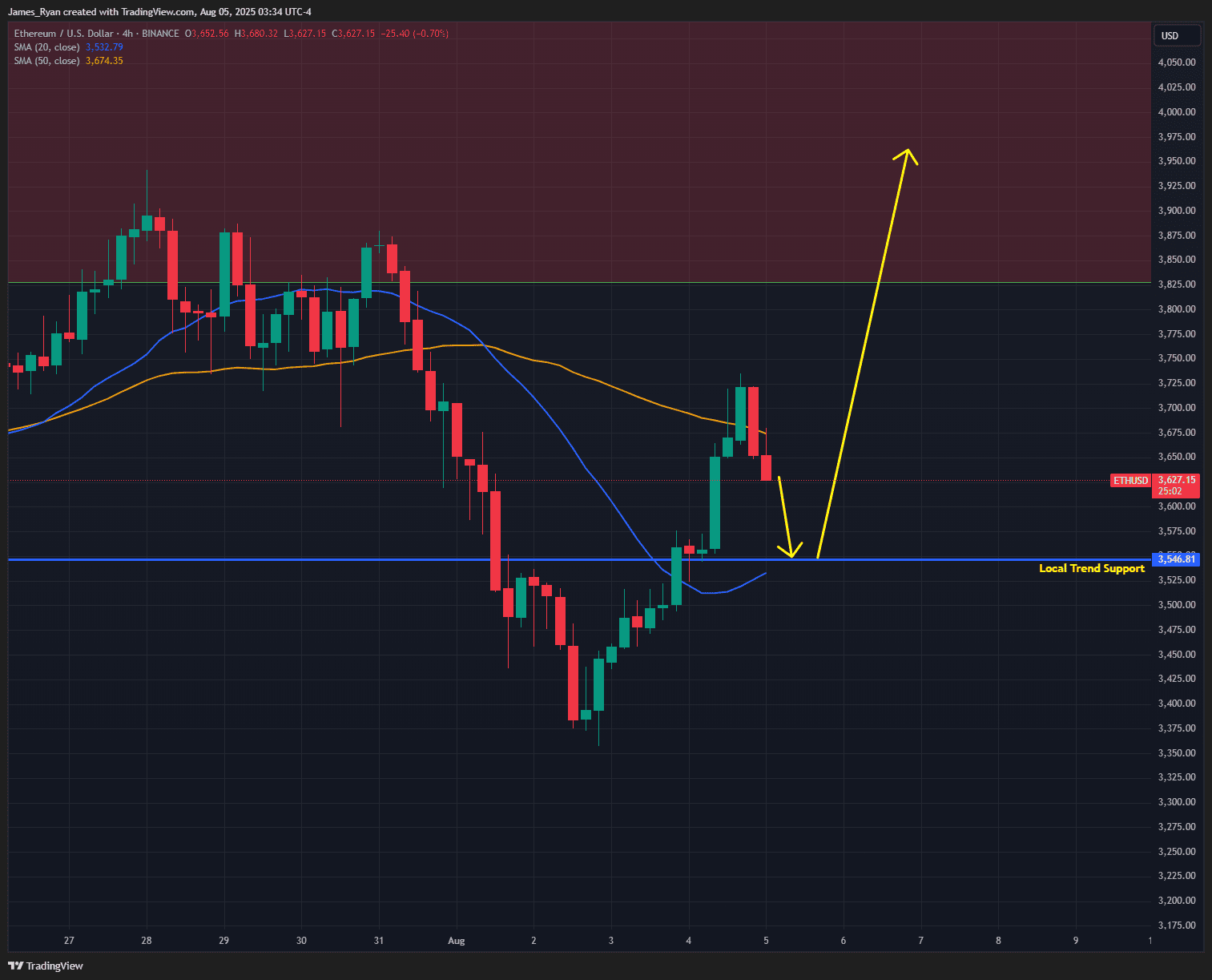Ethereum’s Growing Role in Stablecoins
Tokenizing Real-World Assets on Ethereum
- BlackRock’s BUIDL tokenized U.S. Treasury fund, which runs on Ethereum
- Franklin Templeton’s tokenized money market fund, issued as an Ethereum-based token
- Ondo Finance, which tokenizes U.S. Treasury yields and allows investors globally to gain exposure through Ethereum wallets
What’s Changed Since the 2021 Bull Run?
- The Merge (2022) - Ethereum transitioned from proof-of-work to proof-of-stake, cutting energy use by over 99% and aligning with ESG mandates, making it more palatable to institutional allocators.
- EIP-1559 (2021) - Introduced a burn mechanism that removes a portion of ETH used in transaction fees, especially during high network activity. This has created periods of deflationary pressure on ETH supply, in-turn making it scarcer with better supply vs demand token-omics
- EIP-4844 (2024) - Enabled proto-danksharding, which significantly lowers data costs for Layer 2 rollups, making Ethereum-based applications more scalable and affordable for users and enterprises.
- Explosive Growth in Layer 2s - Networks like Arbitrum, Optimism, and Base now host major stablecoin and RWA projects, thanks to lower gas fees and Ethereum-grade security. These rollups settle back to Ethereum mainnet, reinforcing ETH's position at the center.
- Better Institutional Tooling - Solutions like Fireblocks, Chainlink CCIP, and KYC-enabled smart contracts have matured to meet the compliance needs of financial firms operating on-chain.
How This Affects ETH’s Price and Long-Term Value
- ETH as Fuel: Every stablecoin or RWA transaction on Ethereum or its Layer 2s burns a bit of ETH through gas fees, especially during periods of high activity.
- ETH as Collateral: As stablecoin and RWA protocols grow, they increasingly rely on ETH for liquidity, governance, or backing.
- ETH as Staked Capital: Institutions and individuals alike are staking ETH to earn yield, locking up supply and reducing sell pressure.
Ethereum Is Becoming the Internet Bond Layer


Create a brokerage account today
Reach out to us at Stormrake for further market insight and allow us to help you navigate the sea of mania and laser-eye memes, so that you can realise your goals in the market!
No Advice Warning
Disclaimer
All statements made in this newsletter are made in good faith and we believe they are accurate and reliable. Stormrake does not give any warranty as to the accuracy, reliability or completeness of information that is contained here, except insofar as any liability under statute cannot be excluded. Stormrake, its directors, employees and their representatives do not accept any liability for any error or omission in this newsletter or for any resulting loss or damage suffered by the recipient or any other person. Unless otherwise specified, copyright of information provided in this newsletter is owned by Stormrake. You may not alter or modify this information in any way, including the removal of this copyright notice.Copyright © 2024 Stormrake Pty Ltd, All rights reserved


